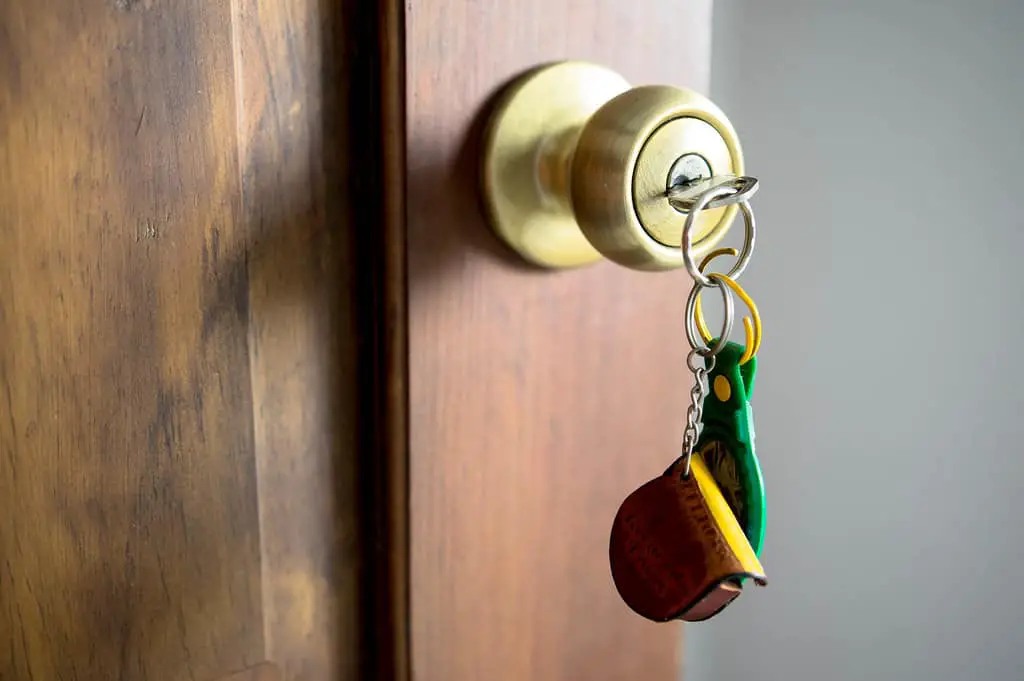Last Updated on May 19, 2020 by Jed Glover
Safety is our utmost priority for our homes. We tack our family inside it. Without those high-end security systems, we always go back to the old way and still trusted way of securing our house – using the doorknobs.
What is Doorknob?
A Door Knob is an instrument used to open or close a door. It is a device that has the capability of securing our houses since it has a lock and a key. Door knobs have other names like “door lever” or “door handle”.
History of Doorknobs
It is hard to provide an exact date when the doorknob was first used. The first written proof of the invention of a doorknob was in 1878. Osbourn Dorsey, an African American inventor, passed a Patent to the United States and got compliance made for improvements on a door-closing device.(A “patent” is a legal certificate that gives a person the right to protect his or her invention.).
Before Doorknobs Exist
People before do not have these doorknobs that we have now. We may be wondering what they use to secure their houses, their valuables. What they had before was only a Lock and Key. This will also depend if they can afford to buy one. What they did before was instead of locking the door, they would keep their money and belongings in boxes or chests that they can lock. So, they only needed to keep the key safe. Makes sense, right?
For those who are well-off, they had their “Chamberlain” – a servant, who they trusted in keeping the keys. So, locking the doors and making them secured did not demand doorknobs. The challenge before was for the poorer people since the locks are too pricey. They had to look for simpler, many affordable ways to open and close doors. For this, they emerged with the latch-string. With this, it only did not keep the people inside but also their treasures.
Different Types of Doorknobs
There are four types of Doorknobs or Door Levers:
- Key Entrance – this is best for exterior doors. The inside part of a keyed entrance knob will differ depending on the maker or brand. In a usual setting, it is a keyed cylinder on the outside, and a push-button lock on the inside that releases when you turn the knob.
- Privacy – is a kind of lock usually used in a bedroom or bathroom. Like the Key Entrance lock, this will also vary depending on the brand or manufacturer. There is usually a pinhole on the outside, and a push-button lock on the inside that frees when you twist or turn the knob. Some manufacturers of door hardware will have a turn button on the knob itself that has to be unlocked manually and a pinhole on the end of the knob as a substitute to the rosette ( for exterior design purposes which brings a refined and timeless look to any home.). You can unlock a Bedroom and bathroom knobs using a generic or the common key provided. You will insert it into the pinhole on the rosette or knob.
- Passage – these are the ones for closets, laundry rooms, halls, and areas where privacy is not needed. These are the “non-locking” knobs. They do not have keyed cylinders nor locking buttons.
- Dummy – from the name itself, we can say that this is a “fake” knob. We usually use this in our cabinets to keep its doors closed at all times. This is often sold in pairs since most cabinet doors are in pairs.
Schlage – One of the Most Common Door Lock Brand
When we say “common”, it has a very wide meaning. In the dictionary, it means “general or public”. When we say “most common brand”, there could be a lot of questions after it.
Since we are talking about doorknobs, which the main purpose is for security, let’s be specific with the topic: the most common doorknobs that people use.
I can conclude that these are the Top 3 brands most homeowners use in their houses: Kwikset, Yale, and Schlage
Among these three, I am very much interested in Schlage Door Knobs. It is not only popular in the doorknob world, but I can also read a lot about its common issue. One of them is: it locks you out. Is it locking us out for real?
How is Schlage Doorknobs Designed?
Schlage have their knobs designed to have it unlocked at all times from the inside but always locked from the outside. You have an option though in unlocking the outside for entry. You only need to turn the lock button in a vertical position. This door never locked the inside going out which was very rational. No buttons to lock when leaving. It’s automatic.
This is how it goes for Schlage locks:
- Vertical – both sides unlocked
- Horizontal – door locked from the outside
The design is that the inside is never restricted or locked to exit. Which makes a lot of sense. A convenient and secure way of going out but never in going inside. This is best for our main doors. You can shut the door whenever there’s a threat outside. A stranger can not get in as it is always locked. No need to push a button. That is if the turn-lock button is horizontal.
Customer Service of Schlage always receives a call because it keeps on locking out people. This was actually an old and trusted method of the Schlage F series, which I find very reasonable. Now, what would be our solution for this as homeowners who installed Schlage in our doors? We can’t let this happen every now and then. But, of course, we also cannot blame the lock all the time. It is only doing its job – to keep us safe and convenient. Our job as users is to find away.
Loyal users of Schlage Door Knobs have few tips on how to resolve this issue:
- Put in mind the Horizontal/Vertical purpose
- Bring key duplicate with you always
- Hide a key somewhere outside or in your garage( of course, only you and a chosen few should know )
It’s always good and it pays to know the product we are using. Sometimes, we may find some features annoying, but reviewing its specifications won’t hurt us. If we know the devices we have, we would appreciate them instead of feeling betrayed.


